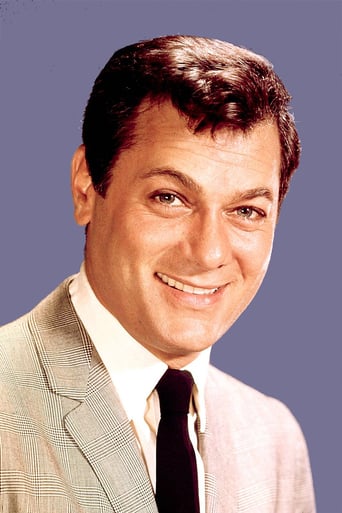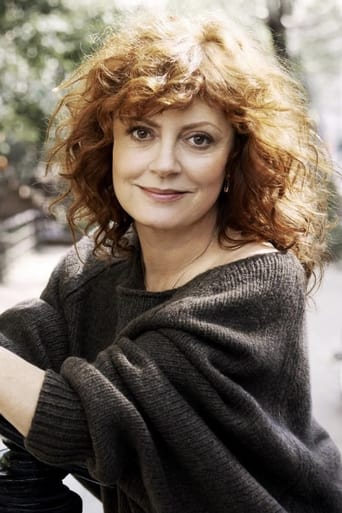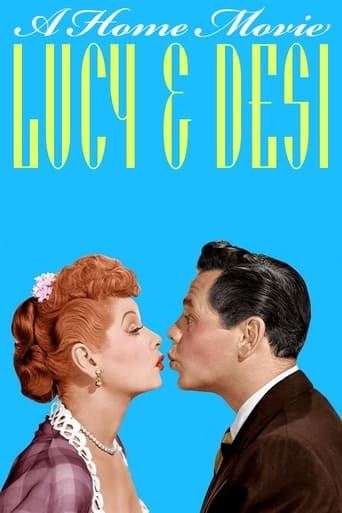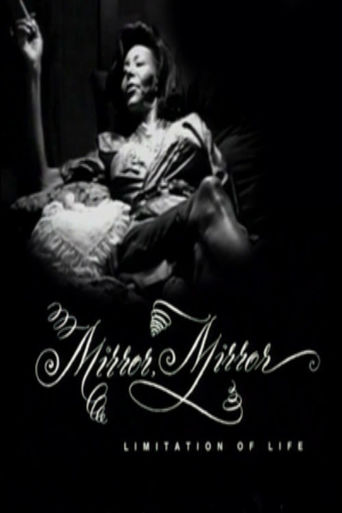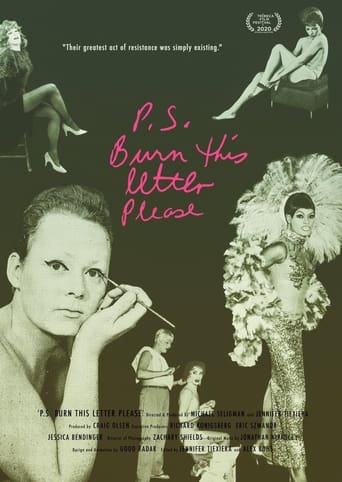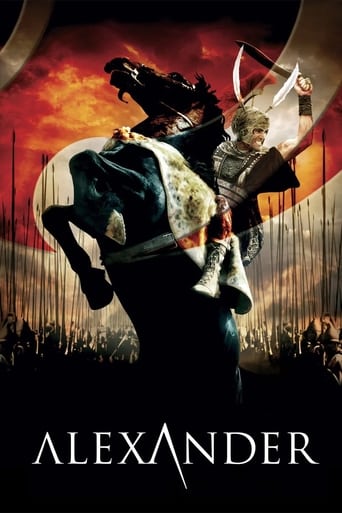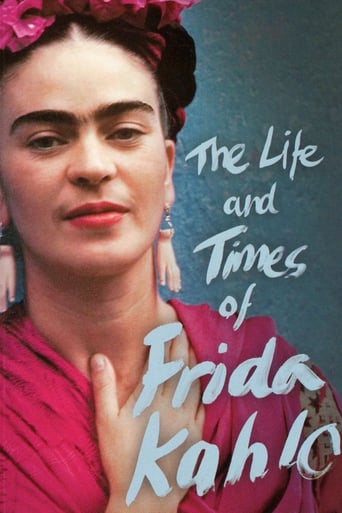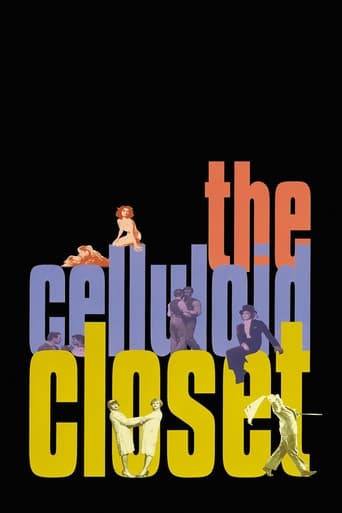
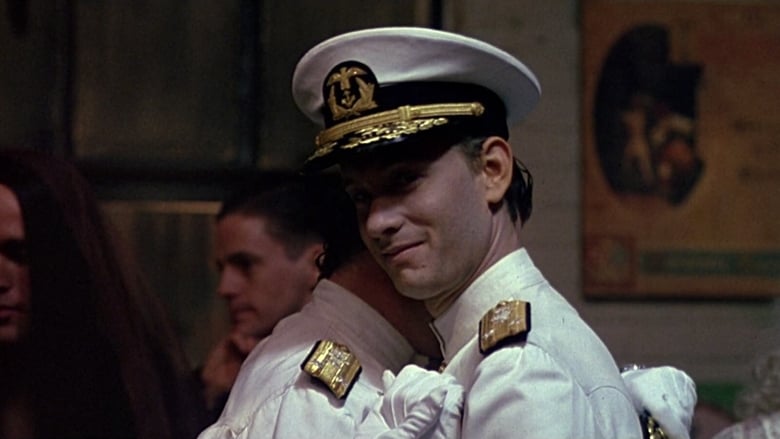
The Celluloid Closet (1996)
This documentary highlights the historical contexts that gay, lesbian, bisexual and transgender individuals have occupied in cinema history, and shows the evolution of the entertainment industry's role in shaping perceptions of LGBT figures. The issues addressed include secrecy – which initially defined homosexuality – as well as the demonization of the homosexual community with the advent of AIDS, and finally the shift toward acceptance and positivity in the modern era.
Watch Trailer
Cast


Similar titles
Reviews
The Celluloid Closet is a wonderful documentary that gives an overview of homosexuality in films throughout the decades. This film manages to be both a joy to watch, while giving rare insights into classic films through actors and screenwriters such as Tony Curtis, Gore Vidal, Jay Presson Allen, and Whoopi Goldberg. Celluloid Closet manages to give a frank view of how homosexuals were portrayed without condemning or belittling any group of people. There was startling revelations of how far homosexuality had to come; from being portrayed as "sissies", villains, completely ignored, something to be ashamed of, or something to be condemned. The discussion of how homosexuals were made into villains was particularly shocking and upsetting. In addition, the Hays Codes surprises a modern film goer with the strict regulations. The documentary brings to light how movie producers managed to get the point across while being subtle enough to avoid being cut. Perhaps most importantly, the Celluloid Closet captures how gay people felt ostracized and ashamed while watching films growing up. Overall, this film was a joy to watch, funny, at times heartbreaking, and a must see for anyone interested in queer cinema, one could only wish for a continuation into today's films.
The Celluloid Closet was a film that documented the use of homosexual characters in the world of Hollywood. Clips from films with LGBTQ characters, actors and writers of those movies, and current actors and actresses were all used to help display the history of the progression of homosexual characters in movies. The documentary was shown in chronological order, from the 1930s to the early 1990s, emphasizing the stereotypical and sometimes unfair to normal ways in which homosexuals were portrayed. The commentary from the actors, actresses, and actors provided an entertainment and informative factor that kept the audience attentive to the subject of the documentary. It was interesting to see how in the films, LGBTQ had transitioned from light hearted humorous characters, to stereotypical sissies, to villainous individuals suffering from some sort of mental illness. Hollywood has such an effect to the everyday life that many individuals in Presbyterian Church called for a reform on the homosexual exposure in films. The Hays Codes being enforced and the amount of censorship that had to be enforced in movies made directing a film with a homosexual character in it much more difficult. The coded language and subtle movements by the actors portraying the LGBTQ characters made it clear to audiences that there was homosexual exposure in the film, just not so obvious. This film is highly recommended for it brings new knowledge of the film world to light, in regards to the issue of homosexuality. It also depicts a clear representation of how the values of different eras change drastically throughout time. Because the documentary was made in the early 1990s, it would be interesting to see how the commentators view LGBTQ characters in film today.
The docufilm, The Celluloid Closet (1995) is enlightening on several levels. It has illustrated how film can be re-interpreted. In this case a few references have re-interpreted carefully selected film clips as a subtext of homosexuality. This is a retrospective prism from the perspective of a homosexual audience. This revised perspective of film becomes the premise from which to forge a tool to critique English speaking cinema, primarily that of the Hollywood variety. In other words the issue of 'homosexuality' is utilised in order to highlight the power of Hollywood and its conservative bent (pun not intended) on morals and values. The set of values are a reflection of public morality throughout the ages. This perception of morality by the audience is a further reflection of the contested and contrasting ideas of ideals between conservative and liberal factions. This is reflected as an ever shifting attitude by Hollywood's toward homosexuality, thereby exacerbating the public's confusion of morality.On closer examination this confusion is explained less by whether homosexuality should be referenced on film, but more about how it should be portrayed and interpreted. Where the stereotyped 'pansy' has been portrayed by film makers and promoters as none-threatening as it's more palatable, the actual practise of homosexual sex acts within film, is pushing the boundaries in order to force the audience to question their own values. Ironically, this forces an almost inverse immorality where the film makers portraying homosexual acts are moral whilst the audience are made to feel unethical even for questioning whether this is acceptable causing a collective, guilt trip among the latter.This 'guilt trip' of the film audience has been averted by the Conservative rulers of morality, which frees the public of their obligation towards shaping morality democratically. These conservative moral formers manifested themselves via the likes of the Hays' Code which actually permitted audiences to view films without moral obligations. At this point film became conceived as merely entertaining, rather than an artistic medium to challenge perceptions of morality.Conversly the Hays' code gave artistic license to creative film makers and actors to introduce subtexts into the plots. As such,The Hay's Code was an involuntary contributor to creative film makers who utilised the 'subtext' as a tool for the re-interpretation by differing audiences. The question is were these subtexts introduced to bypass the Hays' Code, challenge it, or an excuse for to advance the ego of the film maker, thereby promoting her or his credentials as an artist? The docufilm is after all a showcase of talented editing! Paradoxically, where the Hay's Code alleviated audiences of moral obligations, it awakened the conscience of some who became post modern moral leaders. These new moral leaders insist their interpretation of film is superior based solely on the fact that they assert that they can see what others can't. As such, these interpretations of film merely serve as instruments to promote a sense (as opposed to actual) authority to certain post modern commentators. Many of these commentators infer that Hollywood is a conspiratorial medium to cause an unthinking, unconscious, naive audience. Rather the post modern idealists who pride themselves on their advocacy of the individual who thinks for her or himself have hijacked film in an artistic coup for their own agenda.In sum, the celluloid closet is a most enlightening, informative docufilm. Highly recommended.
This was a very good documentary about the treatment of homosexuals in films. It presents a somewhat thorough journey from showing homosexuality in a very negative light (such as psychos) to the more modern sympathetic and normalization of gay life in films.However, from a historical viewpoint, it wasn't particularly complete or thorough, as in the years before the newly enforced Production Code (1934), there were quite a few films about gays. While some were the mincing stereotypical images, many were not and silent and international films had quite a few gay or heavily implied characters--all of which was ignored in this documentary. If you are looking for this, like I am, then this film ain't it.My final complaint is something you can't blame on this documentary. Because the film was made in 1995, many of the complaints about not having enough gay images in film seems rather out of date, as gay characters abound not only in film but seem to abound on television. The complaint I have is that although the many gays about on television because they are incredibly clichéd--usually being noble (to the point of nausea in some instances) or campy and clever (like the "Queer Eye" folks). While not politically correct, showing gays who are jerks, country folk (NOT like you'd see in DELIVERANCE), average folks, Mexicans, baseball players, pizza delivery guys or even idiots would be a nice change of pace--at least this would make them more three- dimensional.



